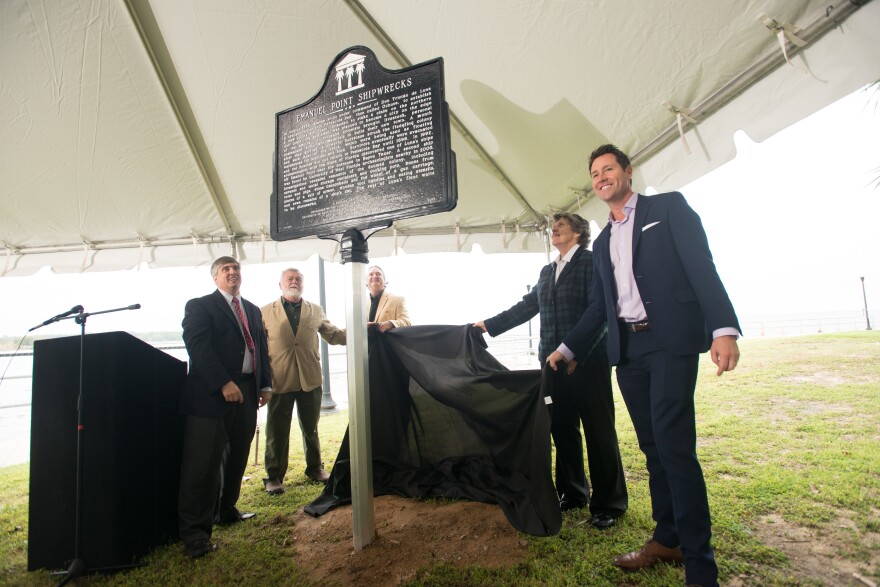Two shipwrecks in Pensacola Bay off Emanuel Point, from Tristan de Luna’s 1559 fleet, now have state recognition through an historical marker dedicated Friday morning.
The Emanuel Point Shipwrecks Marker includes descriptive text in both English and Spanish.
Considered a major archeological find, the two ships that sank during a hurricane, about five weeks after landing on what’s now Santa Rosa Island, have yielded a treasure trove of information about 16th century colonial expeditions, life aboard ships and naval architecture.
“What better way to celebrate Florida Archeology Month that by the unveiling of this fantastic historical marker?” said Della Scott-Ireton with the Florida Public Archaeology Network. She calls the marker a culmination of the work that’s been underway for the past quarter century.
Leading the project is underwater archaeologist Roger Smith, who told the director of the state Division of Historical Resources that surveying for shipwrecks off Pensacola would be part of building a new underwater archaeology program.
Once he moved here, Smith told the gathering that job one was to inventory what he calls “Pensacola’s sunken secrets.”
“And I thought to myself, ‘This bay is probably a giant bathtub of relics,’” said Smith. “So one thing led to another, and I found myself organizing a Pensacola shipwreck survey.”
One of de Luna’s vessels was discovered by Smith and his team in 1992. Smith says the first Emanuel Point discovery opened a new chapter in Pensacola’s history and in archaeology.
“As the shipwreck told us its story, we began to realize that it had brought the earliest European immigrants to Florida,” Smith said.
Remnants gathered from the doomed colony include: metal and ceramic storage containers, bones from cows and pigs, stone cannonballs, and wooden tool handles and eating utensils. The second shipwreck, Emanuel Point II, was discovered in 2006 by archeologists from UWF, about 400 meters west of the first site.
After the discovery was made public, Smith says there was an outpouring of support and assistance to help explore the early colonial site.
“Volunteers came out to the site and into the lab. Civic and social organizations provided sponsorships, and local businesses donated materials and supplies,” said Smith. “And everyone became involved in something that was in their backyard.”
“It is shocking how incredibly lucky we are in Pensacola,” said UWF President Judy Bense, who began the school’s archaeology program. She’s also a founder of the Florida Public Archaeology Network.
“Not only do we have professionals discovering these treasures [and] these incredibly rare archaeology sites,” said Bense. “We are the descendants, we are the ones that reap their benefits of their hard and scary work.”






